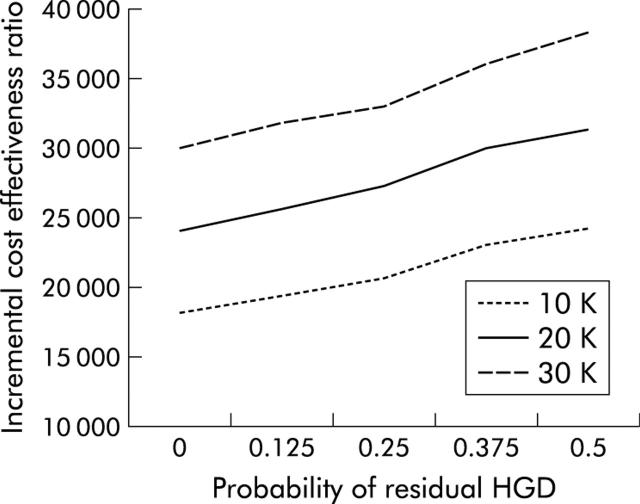Figure 7.
Two way sensitivity analysis of incremental cost effectiveness versus the probability of residual high grade dysplasia (HGD) for three different costs of ablative therapy. The probability that ablative therapy leaves residual HGD is on the X axis. The incremental cost effectiveness ratio, which is the cost to buy an additional year of discounted quality adjusted life expectancy when changing from no preventative strategy to endoscopic ablative therapy, is on the Y axis. Each line represents a different total cost of ablative therapy. Even when ablative therapy is very costly (that is, $30 000) and relatively ineffective (that is, 50% of those receiving therapy still have residual HGD), the cost of an additional year of life expectancy is relatively inexpensive (under $40 000). In situations where ablative therapy may be both less costly but also less effective (as may be the case with ablative modalities other than photodynamic therapy), cost effectiveness ratios remain very favourable, at less than $25 000.

